If you love coffee, this custard is absolutely for you! This Coffee Custard pie has a creamy, smooth coffee filling, encased within a decadent chocolate pastry crust. Garnish it with whipped cream and cocoa powder, or just serve as is for a bold and delicious pie option.
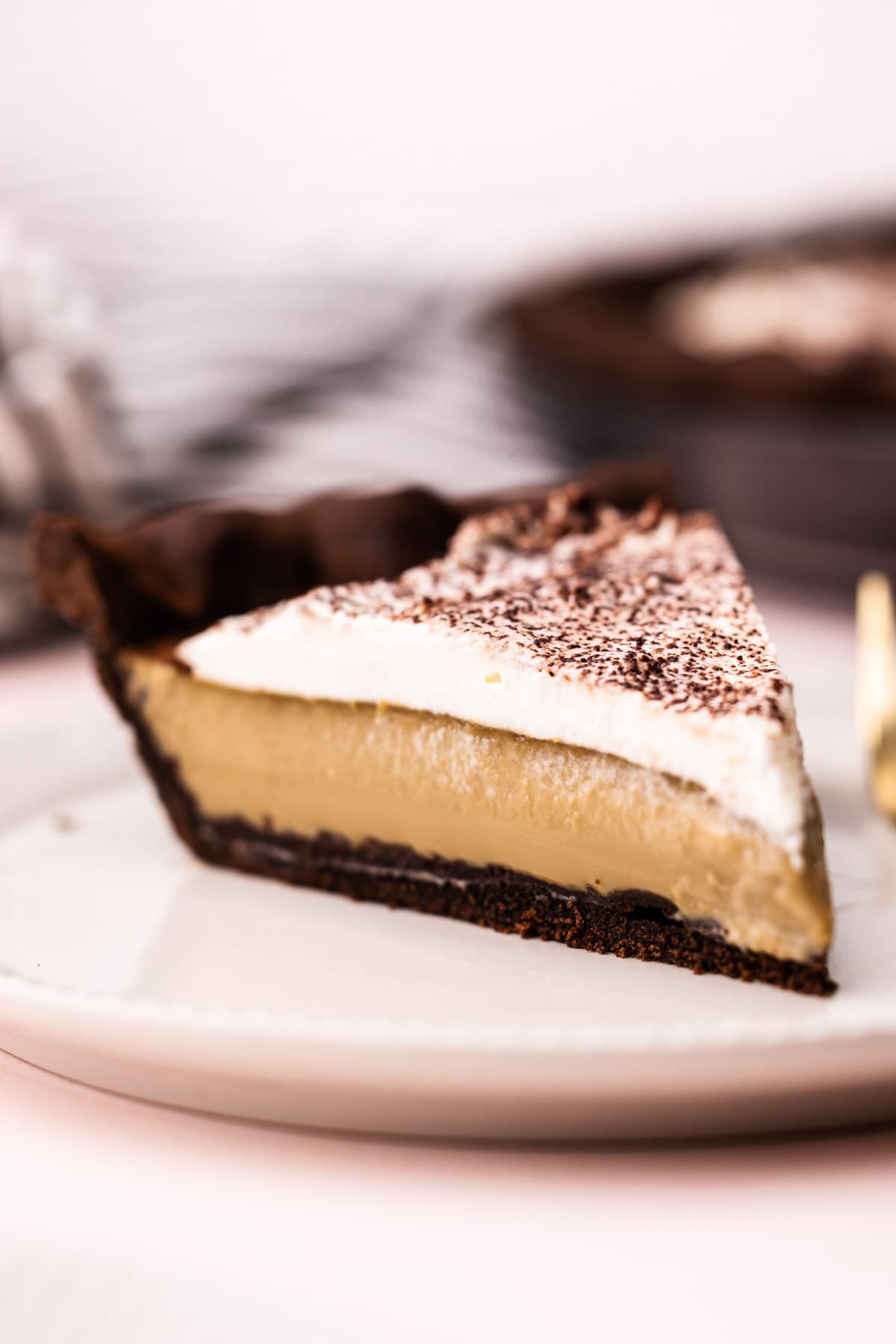
Want to save this recipe?
Enter your email & I'll send it to your inbox. Plus, get weekly updates from me!
Coffee Custard Pie
Generally speaking, custards are completely overlooked in the world of pies. It's easy to opt for a more flashy pie choice, such as Pistachio Pie or Spiced Blackberry Pie when it comes to a sweet treat after a meal. But, I'd argue that custard--in particular--this Coffee Custard Pie is a true and simple demonstration of easy and attainable baking that results in a first-class flavorful dessert.
A good custard pie should be creamy and smooth with a luscious flavor. There is no doubt that when you take a bite of this pie, it's all about that coffee flavor. The smooth and bold coffee custard is accented by the rich dark chocolate crust. You can eat this coffee custard as it is, or compliment it with simple whipped cream and a dusting of cocoa powder.
So, let's get to making it, shall we? The text below offers tons of tips and helpful notes, or you can scroll to the bottom to grab the recipe and get started!
More of a visual person? Check out the video of me making it below, located right above the recipe!
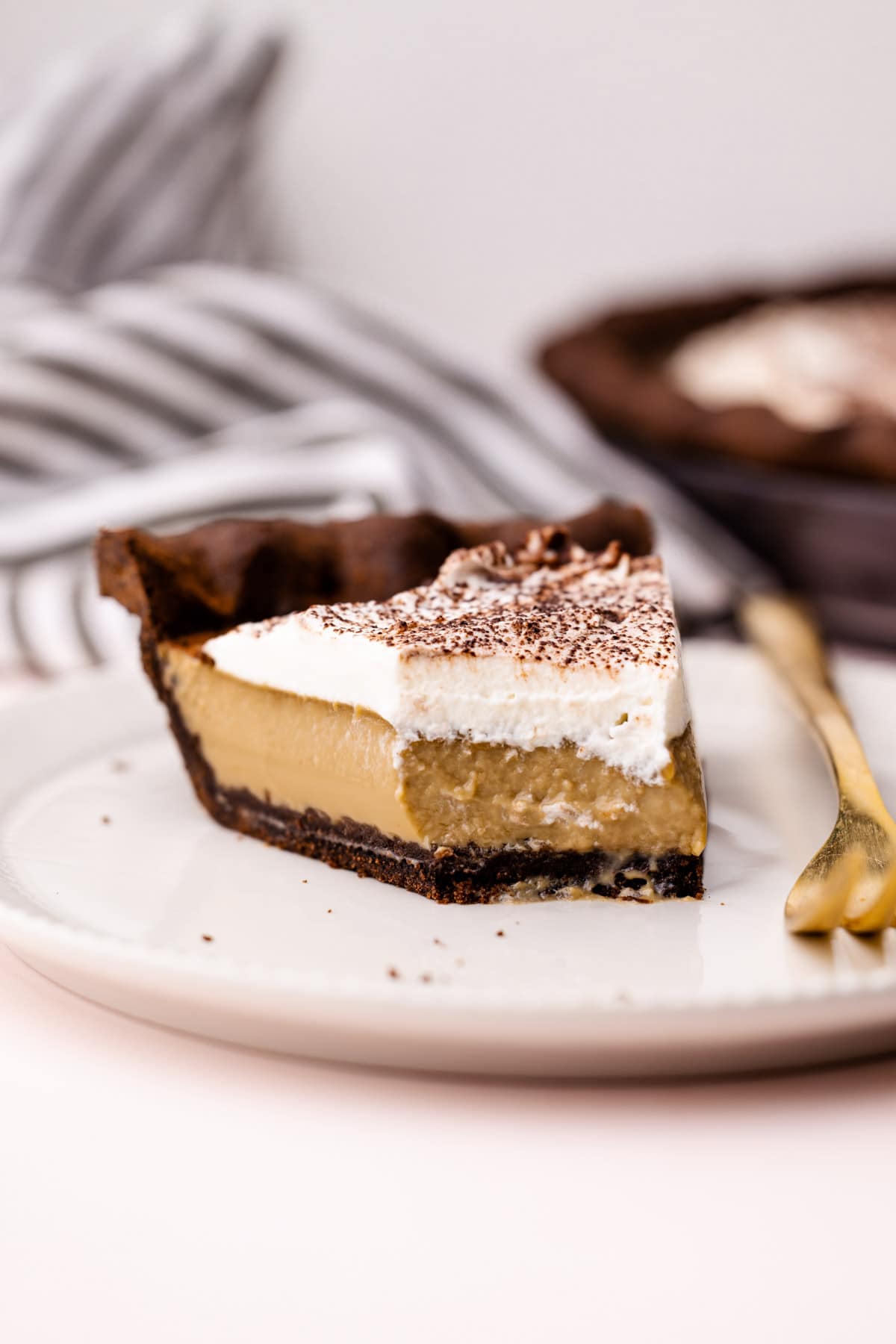
Coffee Custard Ingredients
Here is an overview of the ingredients needed for this recipe. The full recipe is listed below in greater detail.
- milk
- heavy cream
- espresso powder
- eggs
- granulated sugar
- brown sugar
- vanilla extract
Useful Tools to Make This Recipe
Here is a list of some of the primary tools I use in this recipe. You won't necessarily choose to use them all, but they are exactly what I used. Any links may contain affiliate links.
- food processor (to make the pie dough)
- pie plate
- dried rice and beans/pie weights (for blind baking)
- rolling pin
- fine-mesh strainer
- kitchen essentials: baking scale, bowls, measuring cups, and measuring spoons

Making the Chocolate Pie Crust
This coffee custard pairs so well with a crumbly sweet chocolate pie crust. This chocolate pastry is basically a chocolate cookie baked in a pie tin. It's more stable and soft than a chocolate crumb crust.
It also comes together quickly in a food processor following the usual way to make a crumbly pie crust:
- Add the dry ingredients
- Pulse in the butter
- Add the wet (in this case an egg) and pulse until it just comes together around the blade, and then stop!
The consistency will be that of play dough when it's done. It needs to chill for a bit before rolling it out. It's best to leave it chilling for about 2 hours, but if you are good at rolling out pie dough, as little as 30 minutes would probably suffice. It's also perfectly fine to make it ahead of time by a few days.
Like all custard pie crusts, it does need to be blind-baked. This recipe calls for the custard to bake at 325ºF. There is no way for the crust to bake at that temperature, so you absolutely need to fully blind-bake your pastry beforehand. New to blind baking? Check out this Blind Baking tutorial, though the recipe below gives you all the details you need to know.
Please note, the recipe does not call for you to dock the pie crust. This custard pie filling is too liquidy, and if the crust has holes in it, it surely runs the risk of the filling leaking through. Similarly, make sure your pie crust is rolled out to an even thickness with no cracks in it.
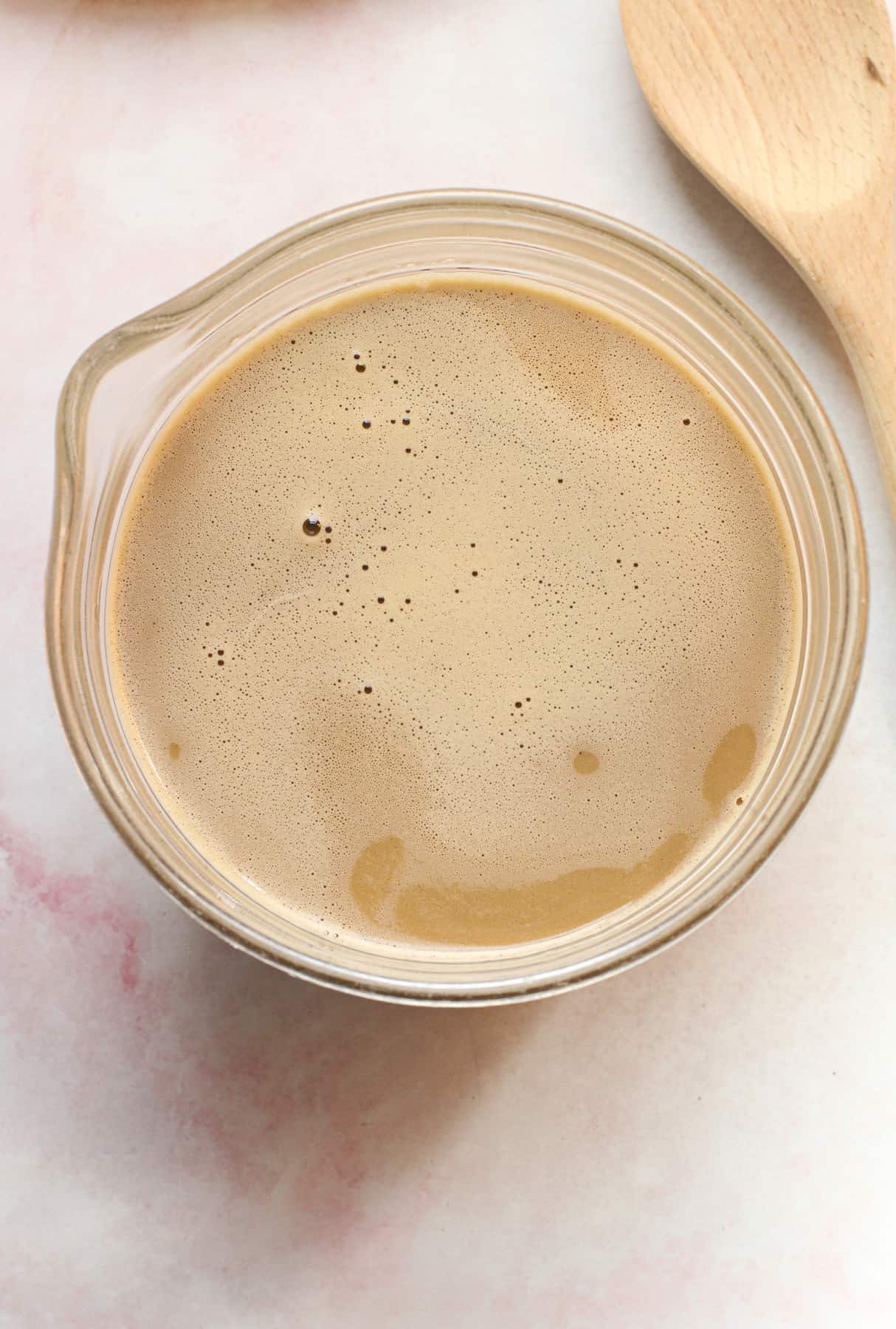
How to Make a Coffee Custard Pie
At first glance, it may feel like making a custard pie is very easy. You mix the ingredients and then bake, right? Well, if you are after a creamy and smooth filling, it's a bit more complicated than that. But, that doesn't mean it's hard; it just means you have to follow a few simple rules.
Once you've baked your crust (see the section above for more info), you can start on the filling. The instructions call for first making the custard on the stove. This helps stabilize the mixture. Some custards can avoid this (like I do with my Classic Custard Pie recipe) but for this pie, I recommend taking the extra step which results in a better final product.
Making the custard on the stove involves tempering the eggs and then cooking the entire mixture until it slightly thickens and can coat the back of the spoon, or reaches a temperature around 170ºF.
Because it's easy to scramble a bit of the egg, it's important to strain your filling. I strain my filling twice actually, for two reasons. The first strain will remove any cooked bits of eggs or the little bit of egg white "rope" (the chalaza). The second strain will assist in ridding the filling of any air bubbles that may have built up during your original whisking phase of the recipe. This small, extra step will prove huge in the end result of achieving that perfectly creamy custard filling.
Once you've made your filling, let it sit for about 5 minutes. Though you have already strained it twice, this quick resting aspect also helps naturally release any air bubbles in the filling.
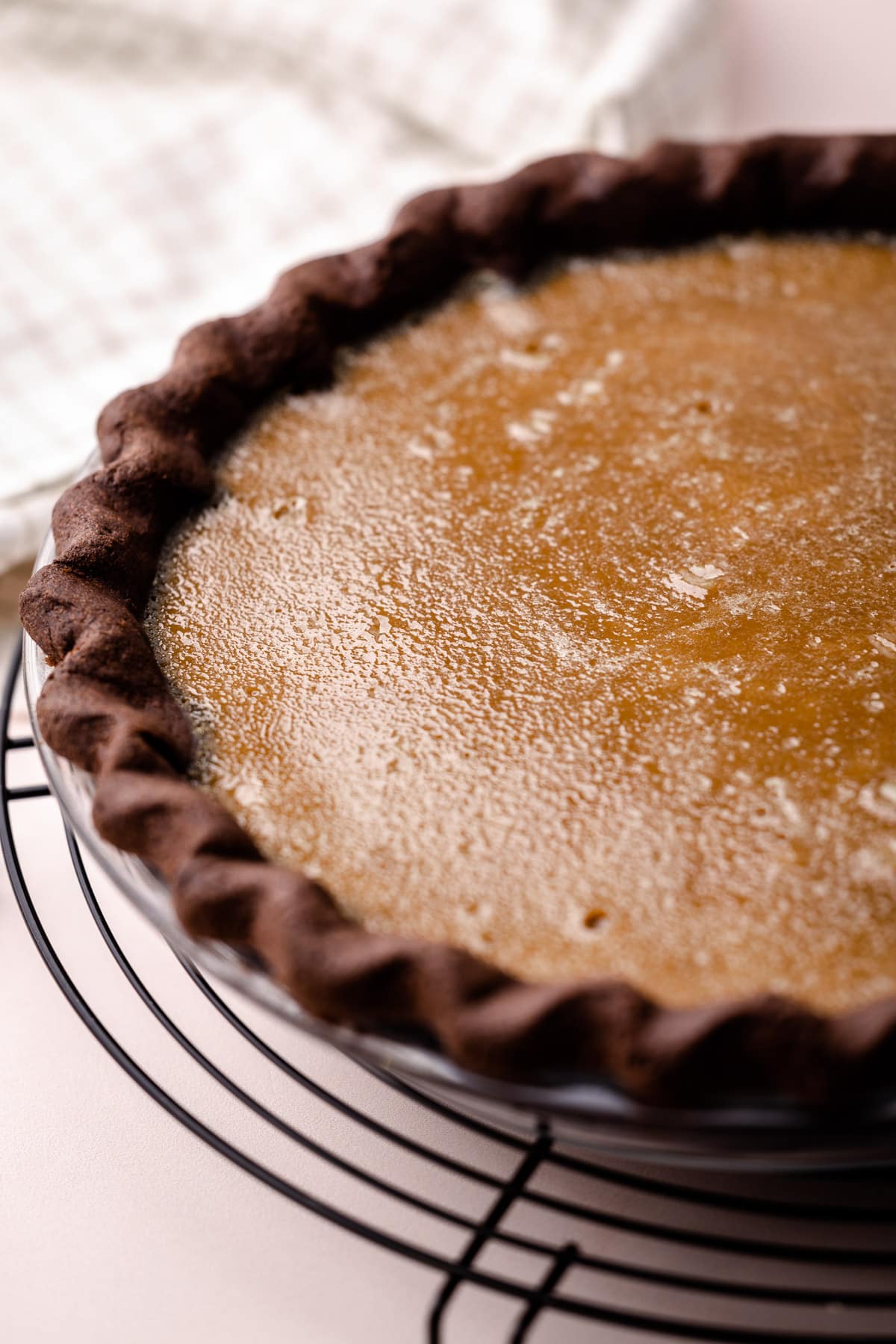
How to Not Spill Custard When Moving it Into the Oven
This may seem like a small deal, but if you've ever tried to move an unbaked pie with a very liquid filling into the oven without spilling it, you know it isn't easy! While some bakers opt to place their pastry into the oven first and then pour the filling inside, I prefer not to. I've found that with the heat of the oven, I'm more likely to spill it or burn myself when I do it that way.
Instead, I'll offer you one tip for a successful transfer of an unbaked custard pie into the oven: never take your eye off the filling. Before picking up the pie, open the oven and make sure your oven rack is in the right spot (which would be the middle). Then, pick up your pie and keep your eye on the filling the entire time. It's when you take your eye off the wobbly filling that you are at risk of spilling.
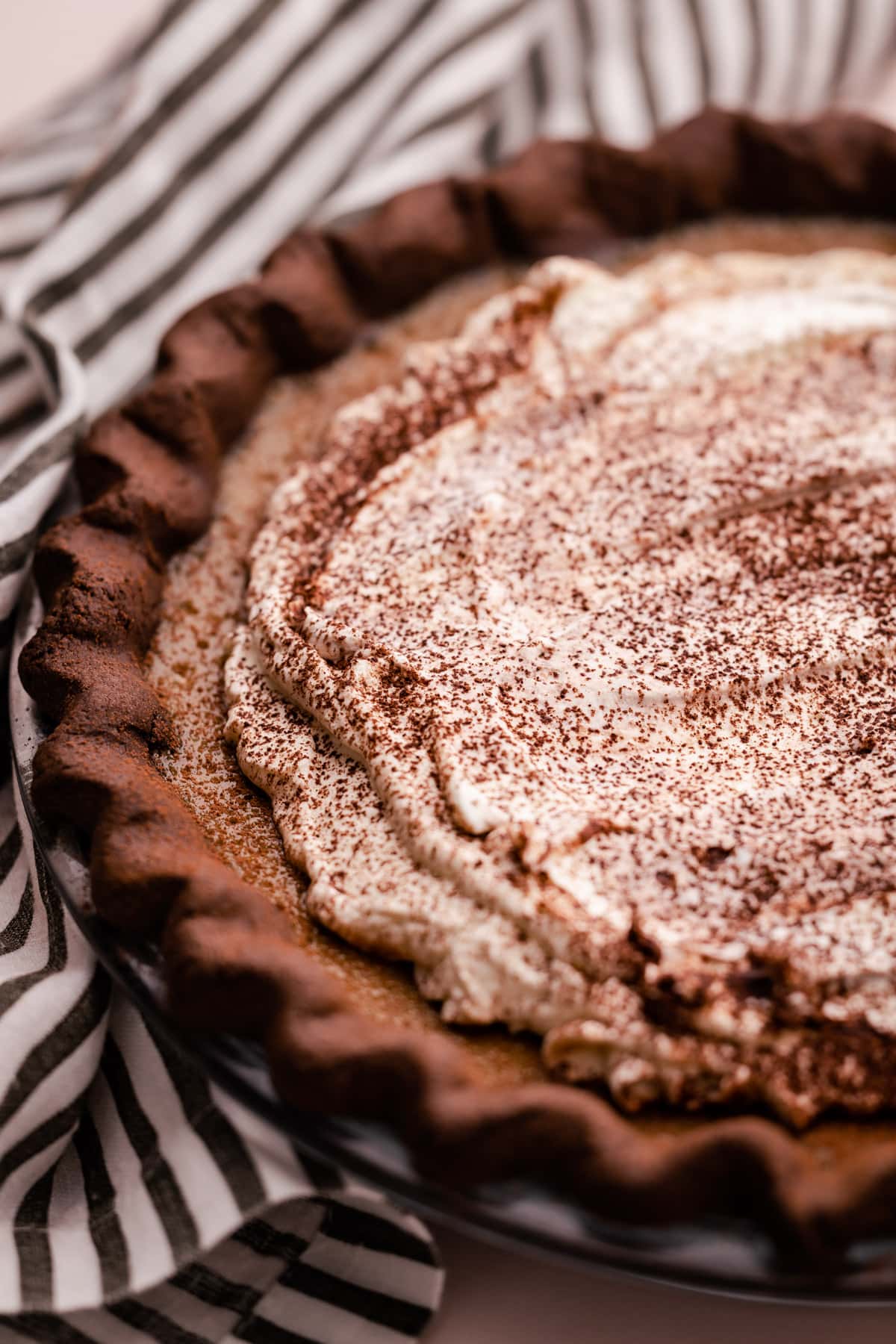
How to Tell if a Custard Pie is Done
If there was only one pie secret I could share with anyone, it would be this: don't over-bake your custard pie! And by that, I am referring to not only this coffee custard pie but any pie that contains dairy and eggs together. When a custard-style pie is properly baked, it should be just barely set. If you overcook it, you are essentially "boiling" the eggs. In some cases, this can lead to a taste of overcooked eggs. It can also make the pie feel tough, or spongy and more commonly, lead to cracked or separated pies. A properly cooked custard is set (and safe to eat) between 170º - 180º. I often use a thermometer to check the temperature of the pie, to be sure.
Another way to know that a pie is done is by looking at the outer edges and seeing if they have begun to "soufflé", or puff up. Look for the soufflé effect to go in about 1-½ to 2" from the outer edge, and for the center of the pie to still be jiggly. At this point, you want to take your pie out of the oven, and place it at room temperature to cool.
Once it's fully cool, move it to the refrigerator to cool for at least 6 hours. During this period it will fully set.
Tips for Making Coffee Custard Pie
- Bake the pie pastry well: It's crucial to bake the pastry fully before pouring in the filling. Custards start off with a very wet filling, and if you pour them into an unbaked crust, you run the risk of breaking the dough and having it surface in the pie filling. In addition, custards are baked at a low temperature so it would be impossible for the crust to actually bake with the filling inside.
- Don't over whisk anything: During testing of the coffee custard, I found that when you whisked the eggs too much it caused a lot of aeration and air bubbles. These air bubbles then reared and burst during cooking. While this won't do anything in terms of the taste of the pie, it's rather unpleasant to look at. So, gently whisk the filling ingredients together in an effort to prevent this.
- Don't overcook it: Be sure to read the above text on using a thermometer and checking for doneness.
- Let it cool before slicing: Custard pies finish setting and firming while they cool. Go hands off and let the magic happen! If you try to cut it before it has completely chilled, you'll end up with custard soup.

Troubleshooting Coffee Custard
Read below for some troubleshooting tips!
The unbaked pie filling has bits of yellow in it: It is likely pieces of cooked egg. Make sure to strain it twice with a fine mesh strainer.
The pie filling is wobbly but the edges have puffed up: This is correct! The pie is finished cooking even when the center is still a bit jiggly. Look for the edges to be puffed up around 2" but the center still has a still wobble.
The pie filling cracked or bubbled: You have either overcooked the pie or whisked the filling too much, or had an issue with heat in your oven. As long as the filling isn't extremely overcooked, the pie will still taste fine. Cover the pie with whipped cream and nobody will know the difference!
The custard is still wobbly after cooling. The pie was undercooked.
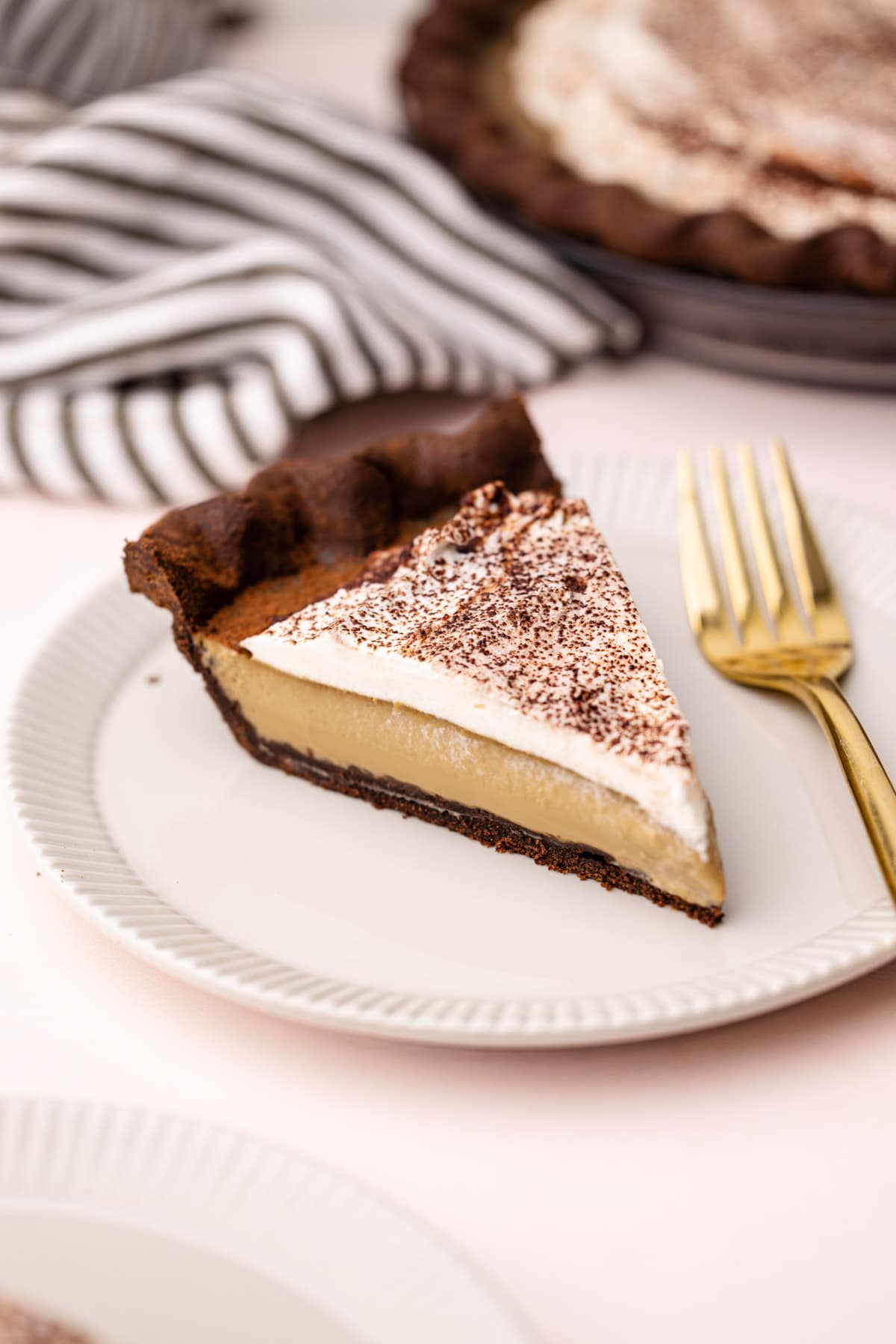
How to Serve It
Admittedly, the brown coffee custard isn't the prettiest all by itself. I prefer to add a thin layer of whipped cream on the top, with a dusting of cocoa powder. Alternatively, you could use a stencil to dust cocoa powder over the top (see this lemon pie for an example). The pie itself should be served cold. It can be made up to 1 day ahead of time. Store the pie in the refrigerator.
More Custard Pies
Full Recipe
Coffee Custard Pie
If you love coffee, you're going to love this! This Coffee Custard pie has a creamy, smooth coffee filling encased within a decadent chocolate pastry crust. Garnish it with whipped cream and cocoa powder, or serve as is for a bold and delicious pie option.
- Prep Time: 00:20
- Cook Time: 01:00
- Total Time: 1 hour 20 minutes
- Yield: about 8 slices
- Category: Custard Pie
- Method: Bake
Ingredients
For Chocolate Pie Pastry:
- 1 cup (120 grams) all-purpose flour
- ¼ cup (28 grams) unsweetened cocoa powder
- ½ cup (56 grams) powdered sugar
- pinch salt
- ½ cup (113 grams) unsalted butter, cold and diced
- 1 large egg
For Coffee Custard:
- 1 cup (227 grams) whole milk
- 1 cup (227 grams ) heavy cream
- ⅓ cup (70 grams) packed brown sugar
- 1 heaping tablespoon espresso powder
- ¼ teaspoon kosher salt
- 2 large eggs
- 2 large egg yolks
- ⅓ cup (70 grams) granulated sugar
- 2 teaspoons vanilla extract
Instructions
Prepare Chocolate Pastry:
- Add the flour, cocoa powder, powdered sugar and salt to the bowl of a food processor.
- Pulse until combined.
- Add in butter and pulse 7 times.
- In a small bowl whisk together the egg.
- With the motor running pour in the egg and let process until the dough forms together into a cohesive ball.
- Scrape the dough from the bowl and place in a piece of plastic wrap and form into a disk and wrap tightly.
- Using a rolling pin roll the dough out until it stretches to the corner of the plastic wrap to ensure a tight seal.
- Refrigerate for about 2 hours, or overnight.
- When ready to use, preheat oven to 400ºF.
- Roll out the pastry on a lightly floured surface to an 11″ circle. Transfer the pastry to a 9” pie plate, crimping the edges as desired. Do not dock the pie dough. Line the pie dough with a round piece of parchment piece and add pie weights (I like to use dry rice/beans/lentils), making sure to push pie weights to the edges. Bake for 25 minutes, then remove from oven and remove the parchment and pie weights. Return the pastry to the oven and bake for an additional 5 or minutes. Set aside until ready to use. If you are new to blind baking, please check out this tutorial.
- Lower the oven heat to 325º.
Prepare and Bake the Filling:
- Add the milk, cream, brown sugar, espresso powder, and salt to a medium-sized saucepan. Heat the mixture over medium heat until small bubbles form along the edges (about 120ºF)
- In a separate bowl, whisk together the eggs, yolks, granulated sugar, and vanilla extract.
- Next, temper the egg mixture: Slowly pour in 1-2 cups of the warmed milk to the eggs while gently whisking. Then, pour the egg mixture slowly into the pot of milk while gently whisking. Continue to cook the mixture for 2-3 minutes, until the mixture has just barely thickened and reached about 160ºF. To double-check the custard has formed, take a wooden spoon and coat it with milk. Draw a horizontal line on the back of the spoon with your finger. If the line “holds” then your custard is set. If the line collapses immediately, the custard needs another minute or so. However do not bring the mixture to a boil; this will overcook the custard.
- Strain the custard through a fine mesh strainer twice, leaving behind any accidental bits of cooked eggs. Let the custard cool slightly, for about 5 minutes, stirring every minute or so to let the steam escape.
- Slowly pour the warm filling into the baked, cooled crust. Pop any bubbles the surface on the custard.
- Place the pie onto your oven's middle rack and bake it for 35 to 40 minutes, or until the custard has set more than 2” from the edge but still slightly wobbly in the middle. The pie should have a temperature of 180ºF.
- Remove the pie from the oven, and place it on a rack to cool. When it's completely cool, refrigerate until you're ready to serve.
- Serve cold with whipped cream and a dusting of powdered sugar.
Notes
Have a question or looking for tips? The text written above the recipe is always a great first place to start! This Coffee Custard Pie was developed with lots of love, and I always include loads of explanations, tips, step-by-step photos and technical advice shared before the recipe.
Weighing your flour is the most accurate way to measure. If you aren't going to weigh it, spoon it into the cup, and then level it off. If you scoop the flour out with the measuring cup and then level, it could change the outcome of the final product.
A baked coffee custard pie can be stored successfully for about 2 days in the refrigerator. It does not freeze well.
Some of the links on this page may be affiliate links. Everyday Pie is a participant in the Amazon Associates Program. As an Amazon Associate I earn from qualifying purchases, at no extra cost to you.


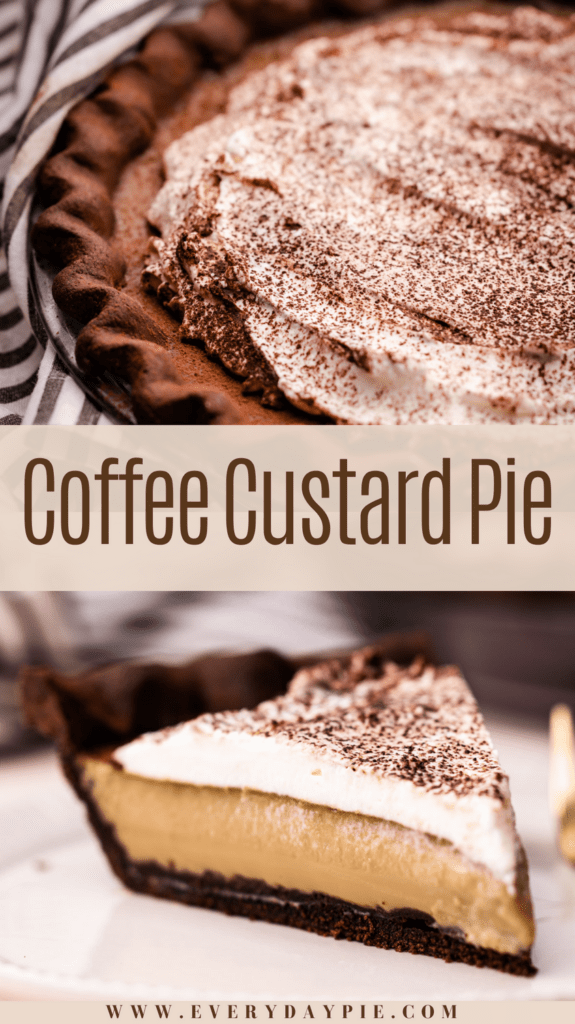
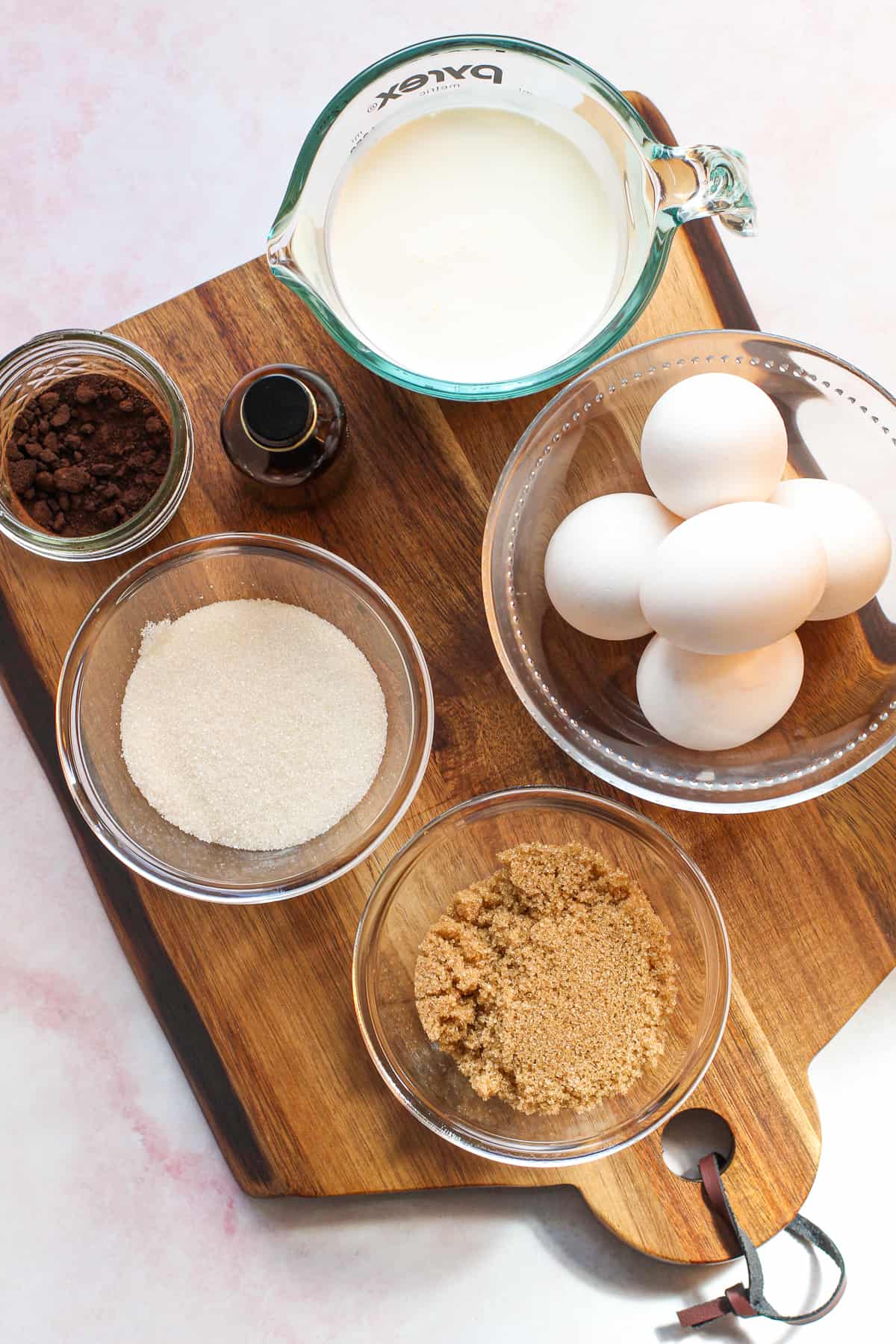
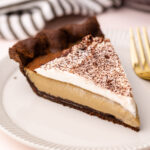
Trucia
I'm trying this recipe for the first time today because it looks so yummy. Unfortunately I don't have espresso powder. Could I substitute instant coffee?
Kelli Avila
Yes!
Jill Bernstein
This came out great. The custard was light and delicious. I loved that the recipe was written with the weighted measurements and also the temperatures along the way. I was really careful at each step to make sure it was the right temperature. Everything set really nicely, looked good and tasted great.
Nancy Huffman
Oh my freaking YUM!! I’ve got to make this!!
Brenda
Can I use gluten free flour for the crust? N
Better still, can I use a regular pie crust and put chocolate in the custard??
Spencer
Hey Kelli…
This looks amazing. Have you tried using half and half instead of the milk and cream separately?
Kelli Avila
I think so long as the ingredients are just cream and milk on the half and half (sometimes some brands have other added stuff) it should be totally fine!
Diane
I made the pie this afternoon. Great treat to consume while watching an evening movie. Simple directions; great result. I used black cocoa powder for the crust.
JaNae
Can I make this without a crust?
Kelli Avila
As a baked custard--I think that'll be fine. It will cook in less time though.
Sandy
This pie was so good that I am going to want to try all your recipes! My husband made the coffee custard and I made the crust. The texture of the custard was so perfect! I never would’ve thought we could make something so tasty and perfectly textured. Thank you for this recipe! Can’t wait to try more.
Kelli Avila
Sandy, thanks for stopping by and sharing your experience with this recipe! So happy you and your husband enjoyed the pie! -Kelli
Amateur pie-oneer
I made this recipe to a T and I’m not sure what I did wrong but it was super gelatin-y. My expectations were that of a pumpkin pie, but that was not my reality. I live in Utah. So maybe the elevation is something to account for? When I was baking it, I had to keep adding time and almost baked it for double because it just wasn’t looking right.
Kelli Avila
Hello! I'm sorry this pie didn't meet your expectations. A custard pie isn't at all like a pumpkin pie, so I can understand why this wasn't what you were expecting. A custard pie is like a creme brulee or a flan! And unfortunately, I can't speak at all to high altitude baking, but I know it can affect things.
Donna
Can you use frozen pie crust ?
Kelli Avila
That should work! Be sure to blind bake it. And you might not use all of the custard filling if you use store-bought pie crust already in a tin, since they're usually smaller than a 9" pie.
Mel Nobee
Another go to recipe for me- love love love this pie! Everyone who Ive shared this with literally adores it.
Great pie for coffee lovers!
Not too sweet, perfect coffee flavour coming through - eeeek how do you do it!!!
Lisa Bacigalupi
I am a diabetic so I was wondering if I can substitute Splenda for the sugar.
Thank you,
Lisa Bacigalupi
Kelli Avila
Hi Lisa, I haven't tried but I've heard splenda can work as a replacement for most recipes? If you give it a try, let me know how it goes!
lorraine zuba
Hi Kelli,
Your coffee custard recipe is delicious!
Problem: couldn't find chocolate pastry????
so i had to use a cookie crust; didn't want to , but I couldnt find that pastry.
Where can I purchase it for the next time I make this custard pie....hubby is waiting for a 2nd one!
Kelli Avila
Here is the recipe for the chocolate pastry:
https://everydaypie.com/chocolate-pie-pastry/
Enjoy 🙂
Nani
Hi Kelli! This looks amazing and I would like to try making this recipe today. Just a question, you said the custard is properly cooked when the temp is between 170⁰-180⁰ . is the temp in fahrenheit or celcius?
Kelli Avila
Fahrenheit!
Alex
Hi Kelli, could I replaced the the crust with grinded biscoff cookies instead?
Kelli Avila
Hi Alex. Unfortunately not for this custard pie. A custard pie is very liquid when it's placed in the oven, and it slips underneath the crumb crust and brings it to the surface, so the crust disappears. For this pie, only a pastry crust will work.
maria
There's no amount of ingredients mentioned 🙁
Kelli Avila
Hi Maria, all ingredients, amounts and instructions are at the end in the recipe!
Jess
I'm a fan of desserts with coffee! What a great recipe! Coffee custard is an amazing idea. Want to try it ASAP. Thank you!
Kelli Avila
Hi Jess! I hope you get a chance to!
Dee
What a great informative post!!! And this pie looks AMAZING!!!!!
Kelli Avila
Thanks so much for giving it a read, Dee!